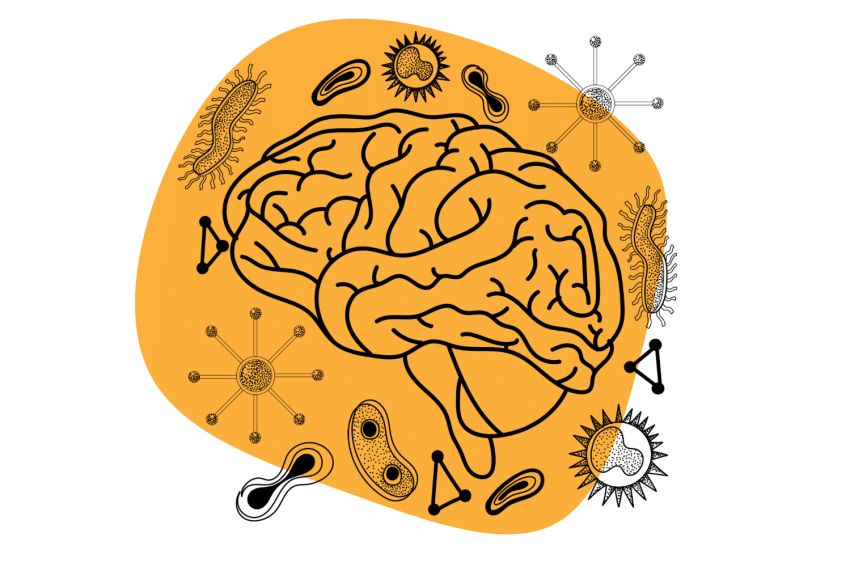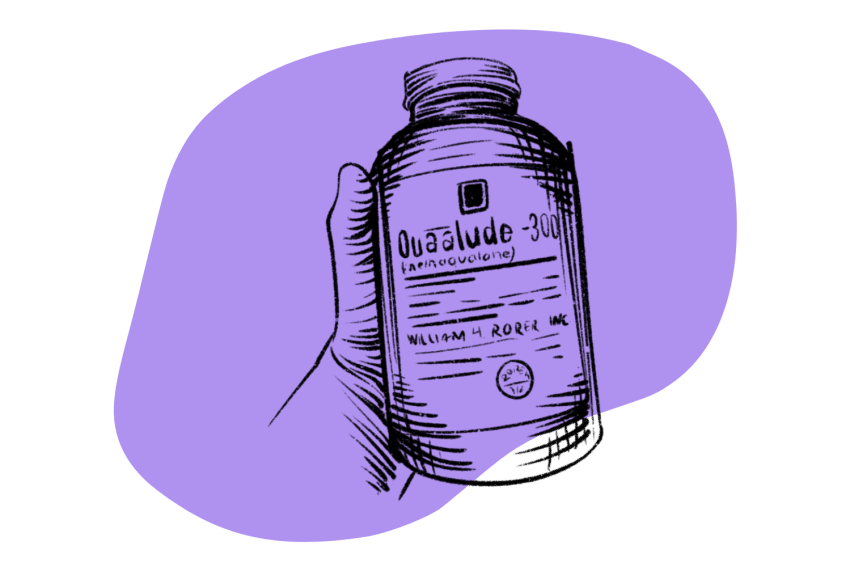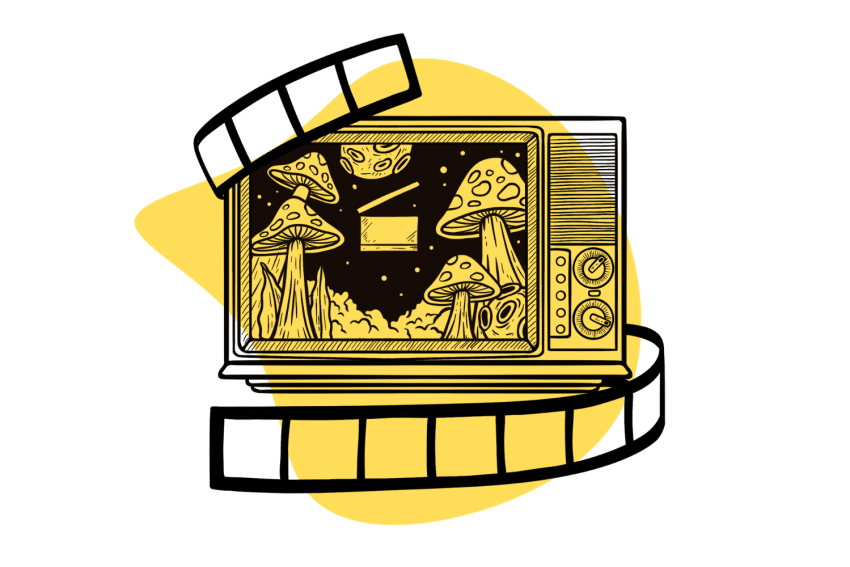Sananga: Amazonian Eye Drops For Clear Vision
Sananga botanical eye drops are a forest medicine brewed by traditional healers in the Amazon rainforest from the roots of the Tabernaemontana plant. It’s used to promote clear vision — both in a physical & spiritual context.
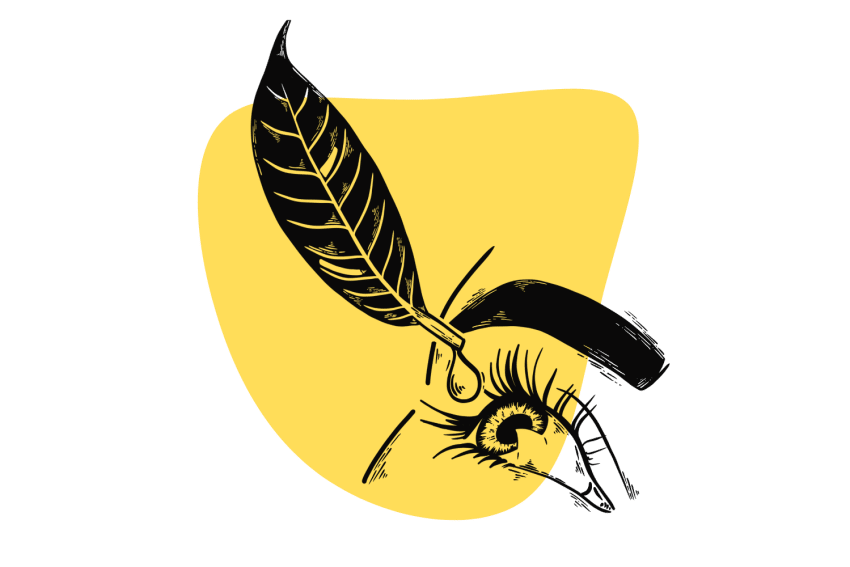
Sananga has many healing qualities, but as with many plant medicines, healing comes at a cost — sananga eye drops sting when applied to the eyes.
After the initial discomfort, users claim to feel calm and centered and have a renewed sense of perspective with vivid clarity and focus.
Traditionally, men would apply sananga eye drops before a hunt, especially at night, to improve vision in the dark and open perceptual fields. Later, sananga became common practice among Santo Daime religious ceremonies.
In the west, sananga is often used as part of plant medicine ceremonies to prepare practitioners for a journey into the astral planes.
The extract is said to have the potential to clear up eye diseases and is considered a powerful spiritual and energetic cleanse for the eyes. It opens users to broader perspectives, and some even claim sananga can ‘decalcify’ the pineal gland.
Take a deep dive into this sacred forest medicine, discover the origins of sananga, why it’s used, and how to apply sananga to your eyes in a step-by-step guide.
What is Sananga?
Sananga is the eye drop of the forest [1]. It’s derived from a root found in the Amazon jungle. Sananga is used to heal eye disease, intensify visual clarity, and enhance night vision.
Sananga is made from either the Tabernaemontana undulata plant (milkwood) or the Tabernaemontana sananho plant (dogbane). Both of these plants are tropical, flowering shrubs that produce white flowers.
First, a liquid is extracted from the plant roots, then boiled down and concentrated. The resulting concentrate, called sananga, is applied directly to the eyes.
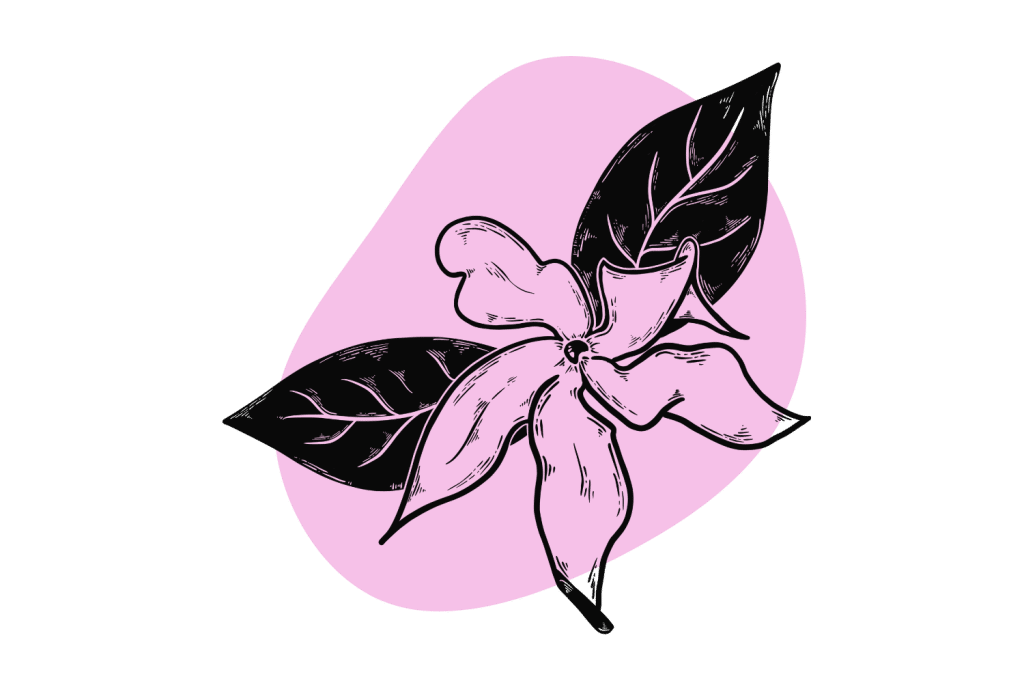
What Does Sananga Feel Like?
Most users report that sananga produces a burning or stinging sensation in the eyes. It’s thought that this burning sensation cleanses and removes any obstructions in the eyeballs, visual and perceptual pathways, and even the energy field.
What is Sananga Used For?
In indigenous or tribal settings, eye drops are used before night hunts to make it easier for the hunters to spot their prey in the darkness.
Sananga is also thought to carry sacred, energetic, and spiritual strength. While it may address some physical health concerns, sananga is also said to remove ‘panêma,’ a tribal world for spiritual sickness. As such, sananga is often used to renew the spirit and energetic field, illuminate new perspectives, clear out conditioned thought patterns, and alleviate supernatural ailments.
In modern western culture, sananga can be found in ceremonial settings as preparation for an ayahuasca journey, to improve eyesight and eye perception so that a user’s visions during the trip are crystal clear.
Like hapé (AKA rapé), sananga is considered part of the ritual preparations of ceremonial experiences because it increases color, vision, clarity, brilliance, and overall sensitivity.
Some circles use sananga botanical eye drops before Kambô frog medicine [2].
Overall, sananga is reported to have properties for physically healing the eyes and healing qualities that transform, distort, modify, or ‘transport’ users through thought, spirit, and force.
The Origins of Sananga
The word sananga —sanango in Spanish and sananho in Portuguese —is influenced by the Latin root word, sanar, which means “to heal.”
Sananga is also known by the name ‘becchete’ (bëcchëte), which is a Matsés indigenous Peruvian-Amazonian word for “plant medicine.” Sananga is also known as ‘mana heins’ by the Matsés of Brazil’s Huni Kuin tribe.
Sananga’s historical roots in native Mayoruna cultures of the Amazon extend beyond the Matsés tribes and include the Yawanawá tribe from the amazonian region at the Gregório River between Peru and Bolivia and the Katukina tribe from deep inside the Amazon rainforest, which consists of six distinct clans.
The six clans of the Katukina tribe include:
- Varinawa — people of the Sun
- Kamanawa — people of the Jaguar
- Satanawa — people of the Otter
- Waninawa — people of the Peachpalm
- Nainawa — people of the Sky
- Numanawa — people of the Dove
All these indigenous tribes and clans revere sananga and consider it to carry shamanic wisdom as a natural forest medicine. Much like ayahuasca, it’s considered a ‘divinatory medicine’ that can inspire spiritual exploration.
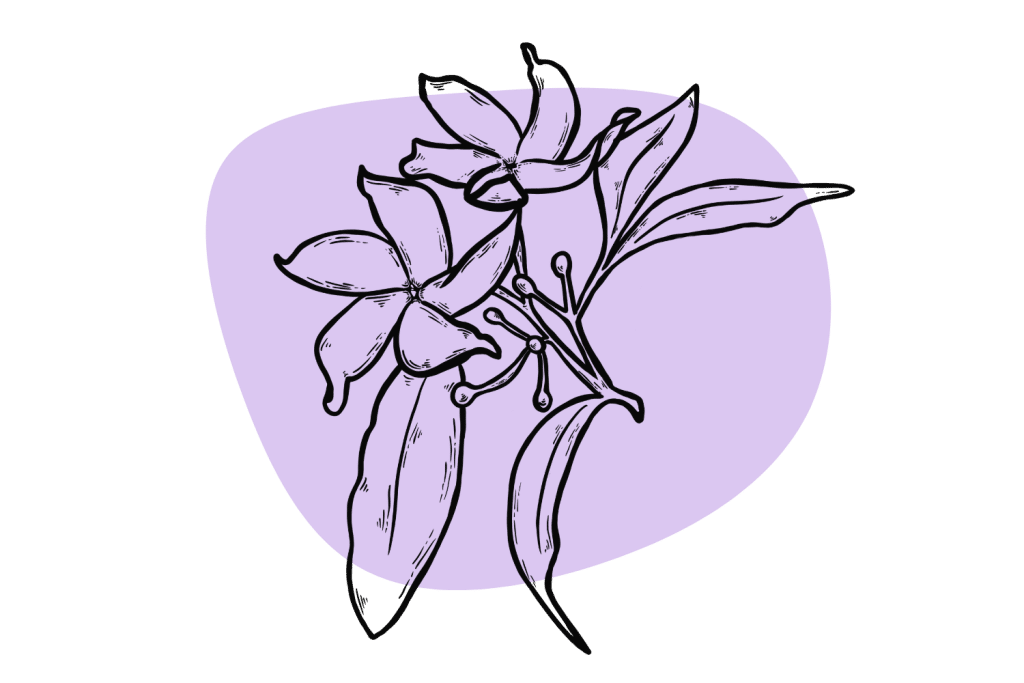
Sananga & The Santo Daime Church
In addition to its Amazonian tribal roots, sananga has a connection to the Santo Daime church from Rio de Janeiro —an urban shamanic religion recognized by the Brazilian government.
Santo Daime is a folk-inspired tradition based on many faiths. Its core beliefs draw from the West African Yoruba religions, catholicism, and regional indigenous practices.
The Santo Daime tradition and rituals focus on consuming ‘Daime,’ also known as ayahuasca or yagé, a medicinal plant brew that supports healing and expands consciousness.
For Santo Daime practitioners, sananga is part of the preparation for the indigenous ritual of taking ayahuasca.
In Santo Daime, the spiritual journey of drinking ayahuasca is called ‘work,’ due to the effort, focus, and dedication required to be present during the trip and later integrate the teachings of the experience. The burning, stinging sensation produced by sananga can be seen as part of cleansing work [3].
The Benefits of Using Sananga Plant Medicine
Sananga is understood to physically and energetically improve the eyes and visual capacities.
Physically, sananga is said to heal eye-related diseases. Although there is a limited amount of published research on the effects of sananga — it is, after all, a ‘forest medicine’ — individual reports suggest that it can be used to treat eye disorders.
Some users claim that sananga eye drops have healed ocular diseases, including:
- Astigmatism
- Blindness
- Cataracts
- Depth Perception
- Farsightedness
- Glaucoma
- Image Resolution
- Myopia
- Nearsightedness
More formalized studies on sananga as a treatment for eye diseases are needed.
Sananga & The Pineal Gland
Energetically, sananga is said to clear and remove obstructions of the pineal gland, known as the ‘epiphysis cerebri’ in scientific terms.
Many schools of thought consider the pineal gland ‘the seat of the soul,’ commonly referred to as the third eye center or third eye chakra [4].
According to the philosopher Descartes, the pineal gland is the place where thoughts are formed and the place that holds the ‘fire and passion’ that ignites an otherwise inanimate body.
According to functional anatomy, the pineal gland supports circadian rhythm by producing 5-methoxyindole, which modulates hormones, especially melatonin.
The pineal gland is subject to calcification. This means it accumulates calcium and phosphate deposits that can interrupt its functioning. Spiritual seekers often suggest that a ‘calcified’ or obstructed pineal gland can negatively interfere with intuition, clairvoyance, and perception.
A few alternative medicine practices can be used to ‘decalcify’ or remove the obstructions from the pineal gland so it can resume its work offering gut-feeling guidance.
Some methods people use to ‘decalcify’ the pineal gland include:
- Crystal healing
- Diet regulation
- Kundalini yoga
- Sananga eye drops
- Third eye meditations
Practices like yoga, meditation, and using sananga drops can cleanse the third eye center and alleviate some of the energetic blockages of the pineal gland.
Sananga & Intention Setting
Traditionally, when harvesting the Tabernaemontana plants used to create sananga and extracting the liquid from the roots, the shamans and healers bring reverence and positive intentions to the process.
Since the plant is commonly used for healing both spiritual ailments and physical conditions, the purpose of curing and restoring are brought to the harvesting and extraction processes.
As with many spiritual healing modalities, the intention is an integral part of the sananga ritual. Before applying the sananga eye drops, consider your motives for using sananga and how you hope to apply the newfound clear vision.
Some individuals set intentions for alignment of their energetic field, while others desire new pathways of perceptual awareness. Sananga can also support the release of built-up emotional, physical, and spiritual blockages. It can even intercept and redirect harmful thought patterns.
Examples of intentions that can be used with sananga include:
- Connecting with a clear vision of the path
- Knowing the resolutions to perceived obstacles
- Moving forward from a place of love
- Bringing renewed focus and determination to life
- Seeing the road ahead with an open mind
When used with the right intentions, sananga is believed to rebalance the mind, body, and spirit, and improve overall well-being by addressing the root cause of disease.
An intention can be so powerful that the Yawanawa and Katukina tribes believe that through the purposeful and directed application of sananga, they can expand their connection to spiritual realms and evolve their sentience.
How Does Sananga Work?
Shamanic healers say that Tabernaemontana undulata, one of the plants used to make sananga, has significant antioxidant and anti-inflammatory properties, which could account for the ‘clarity of vision’ described post-sananga use.
However, there have not been any studies on the pharmacology of sananga to confirm precisely how and to what extent sananga owes its healing capabilities.
Does Sananga Contain Ibogaine?
It’s unclear whether or not the ibogaine alkaloid is present in sananga eye drops.
Ibogaine is a psychoactive indole alkaloid that originates from Tabernanthe iboga, an African rainforest shrub currently being researched as a treatment for opioid addiction and pain management [5].
Ibogaine is said to have mild stimulant and aphrodisiac properties at low doses and hallucinogenic properties at high doses. Due to these psychedelic qualities, iboga is often used on its own for rituals and ceremonies.
Like the Tabernaemontana undulata plant (milkwood) and the Tabernaemontana sananho plant (dogbane), Tabernanthe iboga is part of the Apocynaceae flowering plant family and can be toxic if ingested.
Some schools of thought suggest that the active ingredient of all Tabernaemontana plants is ibogaine, which comes from tryptophan (an amino acid) and iridoid terpene secologanin, a building block of the majority of the terpenoid indole alkaloids.
This theory claims that the toxic, possibly psychoactive effects of ibogaine found in the milkwood and dogbane plants are responsible for the burning sensation caused by sananga and the visionary, divinatory experiences of sananga use [6].
On the other hand, some say that while milkwood and dogbane may contain some alkaloids, they do not contain the active ibogaine alkaloid, and there is no evidence to suggest that sananga contains iboga or any other psychoactive substances.
This theory suggests that the alkaloids present in sananga could be mildly analgesic and sedative, but there is no ibogaine.
More scientific research is needed to determine the actual alkaloid composition of sananga to confirm if it does encompass ibogaine or not.

How is Sananga Applied?
If you intend to use sananga ceremonially, it’s best to allow a shaman trained to use the plant to apply the sananga eye drops for you. Using sananga incorrectly can cause damage to the eyes.
The shaman will generally apply sananga while the participant is lying down in a supine position. They’ll begin by asking the user to clear their mind and set an intention in their heart.
Sananga drops should be shaken well before use, as the mixture may naturally separate.
The same number of drops are applied to each eye (it’s common to start with the left side.) A shaman may opt to use just one to two drops per eye for those who have never experienced sananga before. Up to four drops per eye can be used for more experienced participants.
Once the sananga is applied, the eyes should remain open to allow the mixture to spread evenly across the cornea and into the body.
Though there is a stinging and burning sensation associated with sananga, consider relaxing into it, and allowing the sensation to invigorate, refresh and cleanse the eyes and body.
After a few minutes, the tingling will cease and leave the user feeling calm, renewed, and with incredibly clear vision.
When you’ve finished your sananga ceremony, sananga should be stored in a cool, dry, dark place to preserve its potency.
The Traditional Method of Applying Sananga
The authentic process for using sananga is very elemental.
Historically, healers harvested the sananga plant roots, extracted and brewed the medicinal liquid, and applied the eye drops immediately. There was no way to ‘regulate’ the final botanical liquid, so the sananga tended to be incredibly potent and intense.
The entire process was so primitive that the healers fashioned folded leaves into a handheld eye dropper device.
Today, this kind of sananga experience is rare except for those native to the indigenous community. The sananga liquid available today is commonly diluted with water, making it less intense for users, especially if they are new to indigenous healing practices.
Modern, hygienic glass eye dropper tubes are also used today. This helps practitioners be more precise with the quantity of sananga used each time.
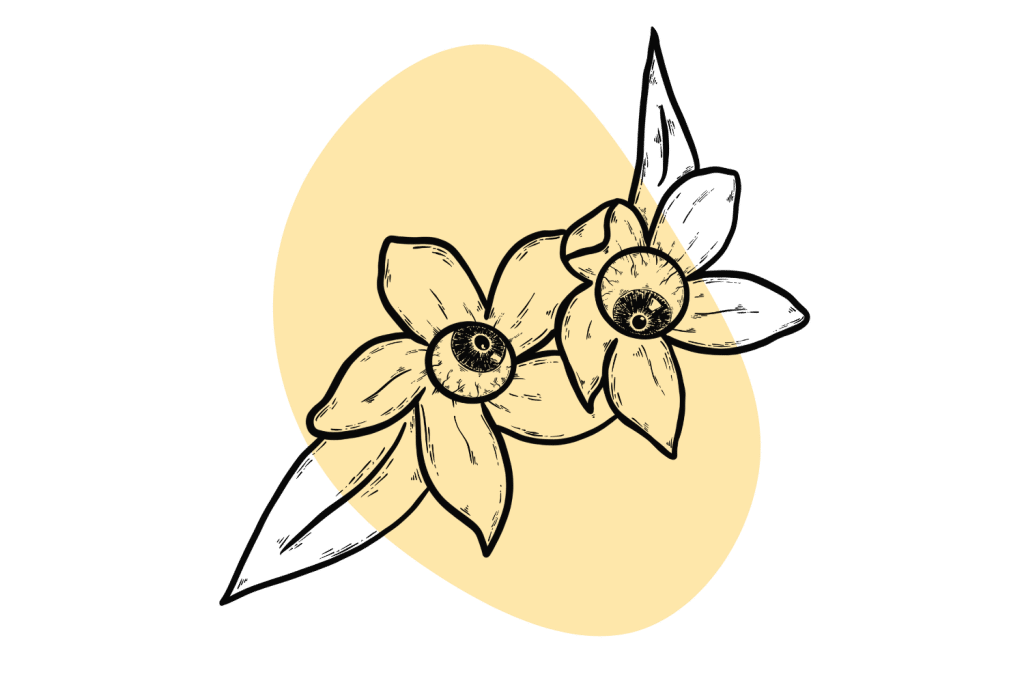
Self-Application of Sananga
If you’re planning to self-apply the sananga, follow these steps:
- Shake the bottle of sananga.
- Lie down on your back.
- Close both eyes.
- Set an intention or connect with your heart space.
- Place one drop in the corner of your eye (closest to your nose.)
- Open both eyes and allow the sananga to circulate.
You can also hold each eye open and drop the sananga directly into the eye. Remember to move quickly between your eyes, so both eyes receive the sananga almost simultaneously.
Once you’ve become accustomed to the sensation, you can increase the dosage from one drop in each eye to multiple drops.
Make sure to remove contact lenses before applying sananga.
It’s also good general practice to wash your hands well before touching the eyes, especially before using sananga.
The effects of the sananga will last anywhere from a few minutes to a half hour. This will depend on the sananga’s quality and potency and how much you use.
How Often Can I Use Sananga Eye Drops?
Sananga can be used daily for a few days in a row. However, much like microdosing psychedelics, you’ll need to take a day or two off every few days of continuous use. This not only gives your eyes a chance to rest and heal, but it also gives you a chance to integrate the clarity, focus, or visions you receive into your consciousness.
Some users prefer only to apply sananga before a plant medicine ceremony to induce enhanced visual clarity before a psychedelic journey. Others opt to use sananga when the eyes become irritated and visual input feels dull.
If you’re new to sananga, start with a light potency extract and use it less frequently. As you become accustomed to the intensity of the sensations, many users will increase the dosage and frequency of use. Some may also opt for a more concentrated, potent sananga preparation.
Remember to store your sananga out of direct sunlight between uses to maintain potency.
It’s also wise to speak to a doctor before using sananga, especially if you’ve been diagnosed with an eye or autoimmune disorder. Allergies are also possible and can be severe.
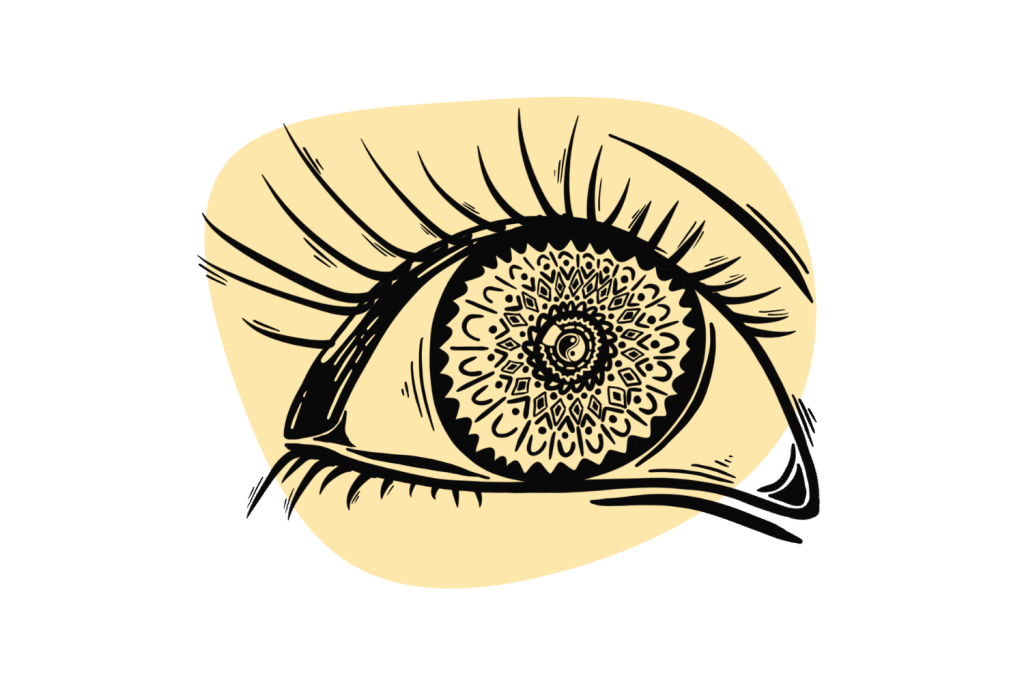
Preparing For A Traditional Sananga Ritual
Though in western culture, we tend to only acknowledge the physical manifestation of experiences, indigenous and native rituals often extend far beyond the physical action of the experience.
Like inipi, the traditional sweat lodge ceremony of purification, the impacts of sananga extend far beyond applying the drops. The ritual of sananga begins with the desire for clarity, visions, or a new perspective — not with the solitary experience of applying the eye drops.
Similarly, the experience of sananga does not end when the stinging sensation ceases, but rather much later as the user integrates the experience and adopts a new way of thinking or seeing.
Consider the following general outline for best applying and later integrating a sananga experience ritually:
1. Intention
Determine a particular intention or purpose for using the sacred medicine eye drops. Do you want a clear vision? Do you want to improve your focus and determination? Would you like to connect to your heart and mind?
2. Breath & Focus
Breath is a powerful tool that can be applied during any plant medicine ceremony to move through discomfort and dis-ease from an empowered place. Consider using a breathwork practice to help center yourself before and during the sananga ritual.
3. Application of Sananga Eyedrops
When applying the eyedrops move calmly from a place of intention. Remember your purpose and be stable and at ease.
4. Focus & Insight
Once you’ve applied the drops and feel tingling or burning, do not withdraw; rather, maintain focus and concentration. Direct yourself with introspection and be aware of insights or wisdom that arrives.
5. Prayer
As the burning sensation from the sananga subsides, begin to pray. Offer appreciation to your most profound knowledge, or whatever you identify as ‘creator’ or ‘divine.’ Generate compassion and love for the plants, for the healers that turned the plant into useable plant medicine, for yourself and your life, for the new path of clarity and vision that you are moving towards, and for anything else that brings gratitude to your heart for the powerful experience you have had with the sacred sananga forest medicine.
6. Observation
Reflect on the minutes, hours, and days following your sananga journey. Notice what emotions, sensations, or revelations come up for you. As they say in some mescaline ceremonies, ‘peyo-ttenion’ (pay attention) to the subtle but profound shift that results from your experience. Have you realized the intentions you set?
Is Sananga Good For My Eyes?
According to Amazonian native culture and ritual, sananga is good for the eyes.
It’s been used for many years to help tribes hunt at night with a clear vision and remove ocular obstructions, energetic and physical.
As far as a scientific perspective goes — it’s inconclusive. But it doesn’t appear that sananga is overtly dangerous either. There’s limited scientific research on sananga at the moment. Still, this indigenous medicinal plant’s persistence over time suggests the preparation is safe when used responsibly (not too much or too often, and prepared in the traditional style).
Sananga is considered a healing medicine for the eyes; it can refresh tired eyes and is said to remove eye disease. Sananga is also seen as healing medicine for visual clarity and spiritual well-being that can remove spiritual illness or fatigue.
Is Sananga Legal?
Sananga is not psychoactive and has not been proven to contain illicit alkaloids (though some experts believe it may contain trace concentrations of ibogaine). Sananda is not considered illegal in the United States or listed on any restricted substance lists worldwide.
Possession of sananga is legal for travel within the United States and across the globe as long as the travel container meets approved size regulations of 100 mL. Check the TSA liquids rule for the most up-to-date liquid travel size regulations, and keep the bottle out of direct sunlight or heat.
Final Thoughts: Sananga Eye Drops For Clear Vision & Spirit
Sananga is a botanical plant medicine for the eyes made from the roots of the Tabernaemontana plant.
These healing eye drops originate from tribes of the Amazon rainforest who used sananga before hunting for improved night vision.
In general, sananga is part of a group of ancient medicine technologies and is viewed as a complete healing method alongside hapé, Kambo, and other medicinal plants. Results are inconclusive of whether or not sananga contains the ibogaine alkaloid, but despite the contents, sananga is not considered hallucinogenic.
Most users report that sananga can burn and sting the eyes when applied. However, after the initial sensation of tingling passes, they experience a profound calmness and renewed sense of clarity or vision.
When used in a sacred ritual, sananga eye drops are said to heal eye diseases and spiritual maladies. Plus, sananga is legal worldwide since it is not psychoactive.
Overall, sananga is an excellent option for anyone challenged by eye problems or someone looking for clarity or a new perspective.
References
- Majić, T., Sauter, M., Bermpohl, F., & Schmidt, T. T. (2021). Connected to the spirit of the frog: An Internet-based survey on Kambô, the secretion of the Amazonian Giant Maki Frog (Phyllomedusa bicolor): Motivations for use, settings and subjective experiences. Journal of psychopharmacology (Oxford, England), 35(4), 421–436.
- Thompson, C., & Williams, M. L. (2022). Review of the physiological effects of Phyllomedusa bicolor skin secretion peptides on humans receiving Kambô. Toxicology Research and Application.
- Platero, L.D. and de Rose, I.S. (2022), “Forest medicines,” Kinship Alliances, and Equivocations in the Contemporary Dialogues between Santo Daime and the Yawanawá. Anthropol Conscious.
- Aulinas A. Physiology of the Pineal Gland and Melatonin. [Updated 2019 Dec 10]. In: Feingold KR, Anawalt B, Boyce A, et al., editors. Endotext [Internet]. South Dartmouth (MA): MDText.com, Inc.; 2000-.
- Litjens, R. P., & Brunt, T. M. (2016). How toxic is ibogaine? Clinical toxicology (Philadelphia, Pa.), 54(4), 297–302.
- Contin, A., van der Heijden, R., Lefeber, A. W., & Verpoorte, R. (1998). The iridoid glucoside secologanin is derived from the novel triose phosphate/pyruvate pathway in a Catharanthus roseus cell culture. FEBS letters, 434(3), 413–416.



